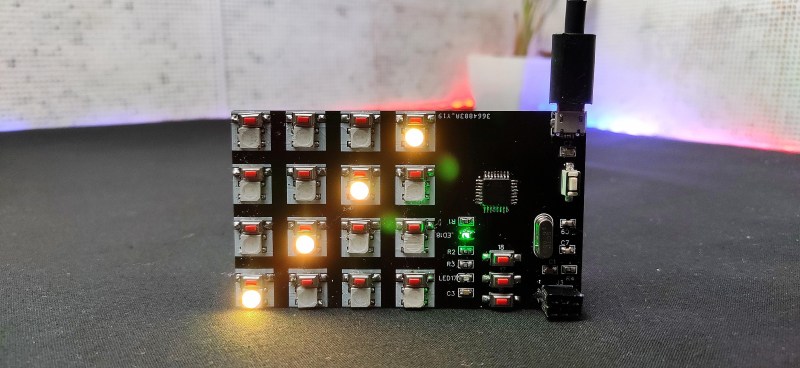If you want to make a good first impression on someone, it seems like the longer you can keep them talking, the better. After all, if they want to keep talking, that’s a pretty good sign that even if you don’t become business partners, you might end up friends. What better way to make an acquaintance than over a friendly game of tic-tac-toe?
This one will probably take them by surprise, being a 4×4 matrix rather than the usual 3×3, but that just makes it more interesting. The front of the card has all the usual details, and the back is a field of LEDs and micro switches. Instead of using X and O, [Edison Science Corner] is using colors — green for player one, and red for player two. Since playing requires the taking of turns, the microcontroller lights up green and red with alternating single-button presses.
Speaking of, the brains of this operation is an ATMega328P-AU programmed with Arduino. If you’d like to make your own tic-tac-toe business card, the schematic, BOM, and code are all available. Be sure to check out the build and demo video after the break.
















With a 4×4 matrix of multi-color LEDs available, consider implementing L-game on it (https://en.wikipedia.org/wiki/L_game).
When I was a student at Delft University (EE dept.), there was a hardware implementation of L-game in the faculty restaurant. This consisted of about 100 74xx TTL chips, probably some other components and a pretty hefty power supply. It played a fairly good game, except when you put the starting position in manually (possibly rotated it by 180 degrees). Apparently the implementation had an “opening book” which it did not use when you entered the starting position manually.
You can’t talk about business cards without referencing this: https://www.youtube.com/watch?v=cISYzA36-ZY